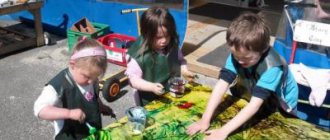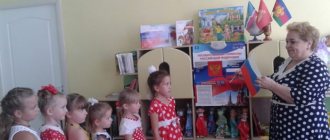“Summary of an open lesson on choreography at an additional education institution”
Author:
Kryuchkov Alexey Vasilievich
teacher of additional education of MAU DO Khabarovsk, "Palace of Children's Creativity "The Little Prince"
Shkrob Svetlana Nikolaevna
methodologist of the MAU DO Khabarovsk, "Palace of Children's Creativity "The Little Prince"
“Summary of an open lesson on choreography at an additional education institution”
Municipal Autonomous Institution of Additional Education of Khabarovsk, “Palace of Children's Creativity “The Little Prince”
Outline of a lesson in a choreographic class in the pop dance ensemble "Inspiration" (mixed male group) of the municipal autonomous institution of additional education in Khabarovsk "Palace of Children's Creativity "The Little Prince" on the topic
" Practicing combinations of a choreographic concert number "
Developed by: Kryuchkov A.V. .,
additional education teacher
Khabarovsk, 2019
Topic of the lesson: “Practicing complex combinations of concert numbers, training stretching elements”
Date of the lesson
: 02/15/2019
Type of lesson:
group creative training session in a children's choreographic association for additional education of children.
Students:
5th year of study, mixed age group of children, age of children from 10 to 14 years.
Lesson duration:
45 minutes
Technologies used in the lesson:
- Health-saving (
creating conditions for the healthy development of students in compliance with organizational and pedagogical rules for conducting classes)
;
- Informational
(active use of audio, musical compositions taken from special music sites on the Internet);
- Technologies of pedagogical communication (
planning a communicative structure, interaction adequate to pedagogical tasks, managing communication, creating an emotional atmosphere);
- Game (
for practicing tempo, using supports, contact improvisation);
- Personality-oriented (
use of elements of multi-level training);
- Peer learning technology;
- Collaboration technology
(in improvisation rehearsal);
- Prospective-advanced training (
the introduction of some complex elements into the warm-up complex helps to reduce the difficulties of performing elements of a concert performance)
Purpose of the lesson:
improving dance technique. Development of emotional expressiveness of a dance performance by repeating the movements learned.
Educational objectives:
1. To consolidate the concept of “mastery of the motor functions of the body”, monitor its coordination, emancipation, and muscle control skills;
- Monitor the degree of assimilation of knowledge, skills and abilities by establishing correct posture during movement and at rest;
- Achieve correct group interaction during the rehearsal session;
- To develop in the group the ability to clearly and synchronously perform dance movements.
Educational tasks
:
- Cultivate persistence and patience when performing certain choreographic elements and movements;
- To form a sense of responsibility, independence and cognitive activity in the group;
- Motivate children to solve assigned problems, awaken curiosity;
- Instill in students a culture of communication and ethical standards of behavior in a group dormitory.
Developmental tasks:
- Develop students' creative activity, thinking, imagination;
- Develop critical thinking and the ability to conduct substantive dialogue in society;
- To develop the aesthetic understanding and artistic taste of students;
- Development of choreographic skills.
Planned educational results:
- Deep assimilation of conscious basic knowledge of mastering dance techniques, the ability to move correctly, beautifully and competently while dancing;
- The ability to communicate with classmates and the teacher, to properly organize joint work to master new dance techniques and compositions;
- Development of self-assessment and reflection skills, the ability to analyze achieved results;
- Balanced development of physiological and mental functions of students, obtaining satisfaction from the lesson;
Basic terms and concepts:
technique and elements of dance, warm-up and cool-down, dance class, solo students, jumping with lunges, “chains of movements”, new elements of dance, support, improvisation,
Equipment,
material and technical base - the presence of a technically equipped office, a tape recorder with connected speakers, the presence of a mirror wall and a machine for controlling movements, easily opening windows, bottled water.
The threefold objective of the lesson:
— Educational:
increase the level of child development
— Educational:
to form the moral qualities of the individual, views and beliefs.
— Developmental:
when teaching, develop students' cognitive interest, creativity, will, emotions, cognitive abilities - speech, memory, attention, imagination, perception.
Lesson plan and structure, approximate timing of each stage
| Stage name | Content | Duration of the stage |
| Organizational moment, greeting, announcement of the topic, and future work plan | 1 minute. |
| Warm-up of the musculoskeletal system, the whole body in combination with proper breathing: head, shoulder girdle, rotation of the body, arms, legs. Jumps forward, backward, a chain of jumps diagonally across the room, with arms raised, side steps, a diagonal cartwheel, running around the perimeter of the choreographic hall | 5 minutes |
| Jumping “squat”, legs parallel, legs to the sides, walking with high legs raised and arms wide apart, “Russian squat” from a squatting position, jumping with straightening the arms and legs and spreading them to the sides with a preliminary demonstration of this exercise by the teacher, training of dance elements “connected chains of movements”. Recommendations from the teacher to the dancers on combining the dance into a single whole, simultaneous coordination, showing some complex movements. Repetition of dance elements to musical orchestration | 12 minutes |
| Work of the teacher with 2 soloists of the ensemble, jumping, synchronization of movements, comments from the teacher, demonstration of the correct execution of movements, dance of the soloists to the music. Practicing and repeating movements by soloists. | 3 minutes |
| Combining a number with solo students and a group dance into a related composition. Dance run without music. Repeating the entire dance number, taking into account the teacher’s comments, to musical accompaniment. Repetition and consolidation of complex elements of movements on counts 1-8. Performing dance movements to music. | 10 minutes |
| Improvisation by the teacher and the introduction of new movements by the teacher into the final element of the dance. Showing movements to the group's soloists, memorizing and practicing the element. Training in performing support, explanations from the teacher on the correct clasping of hands, coordination of joint actions in support. | 10 minutes |
| An element of a squat jump, but with support from the hands behind, stretching the body, high jumps with the connection of arms and legs, stretching the outer surface of the thighs, rolling back with support on the arm laid back, stretching the arms. | 3 minutes |
| Reflection, summing up, sharing impressions, discussing the past lesson. Teacher's assessment of students' work in class, homework, farewell. | 2 minutes |




